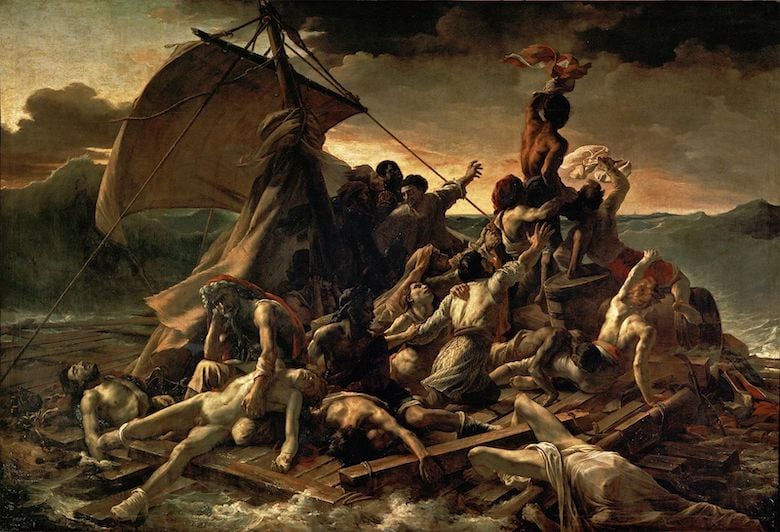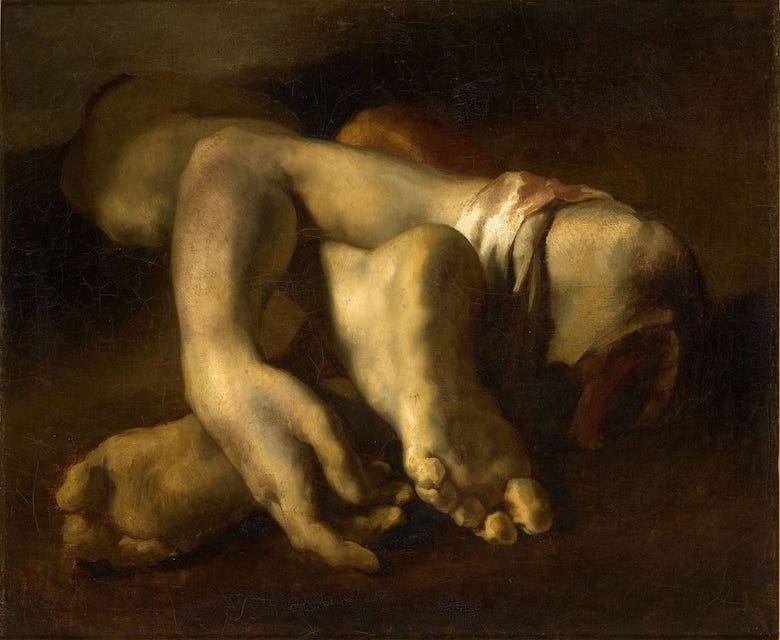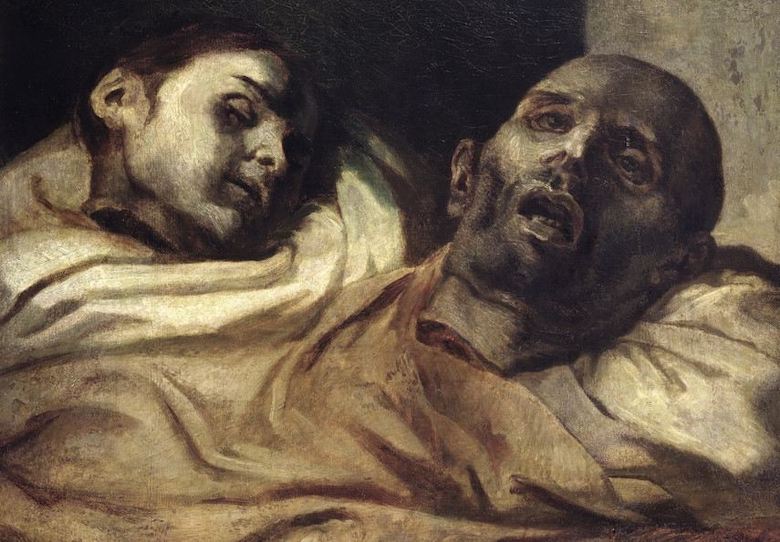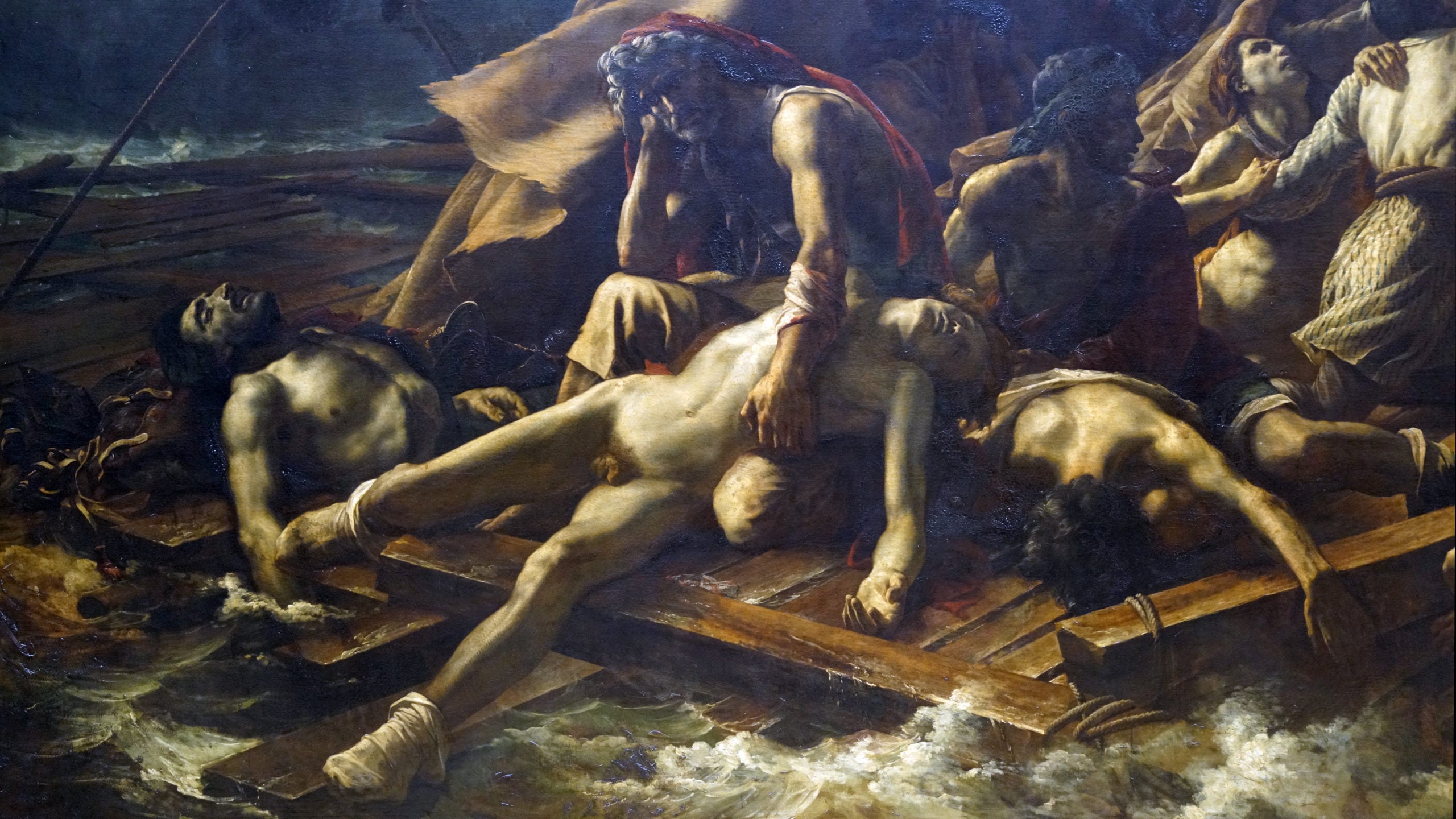For horror aficionados who love horrific works of art, perhaps no artist is more intriguing than Theodore Gericault. Theodore Gericault was a French painter best known for his dramatic and highly realistic works. From his early masterpiece, Raft of the Medusa, to his later anatomical pieces, Theodore Gericault’s art was characterized by its intense subject matter and powerful emotional impact. Not only that, his art often contained disturbing, graphic images that would really unsettle viewers.
Let us take a look at the life and work of this eccentric French artist.
Theodore Gericault: A Brief Biography
Born in 1791 in Rouen, France, Gericault grew up in a wealthy and influential family and showed an early talent for drawing and painting. At the age of 16, he was sent to Paris to study art and was soon admitted to the prestigious École des Beaux-Arts.
Gericault’s early works were influenced by the Neoclassical style of the time and featured historical and mythological subjects. With that said, he soon began to explore more modern and contemporary themes and became known for his highly realistic and dramatic paintings.
The Raft of the Medusa: Gericault’s Masterpiece
One of Gericault’s most famous works is Raft of the Medusa, which he completed in 1819. The painting depicts the tragic story of the Medusa, a French naval vessel shipwrecked off the coast of Senegal in 1816. The ship’s crew, who were mostly soldiers and convicts, were stranded on a makeshift raft for 13 days without food or water. Only 15 of the original 147 passengers survived.
Gericault’s painting shows the survivors of the Medusa clinging to the raft as they are surrounded by the bodies of their fellow passengers. The painting is a powerful and disturbing depiction of the horrors of the shipwreck and was widely praised for its realism and emotional impact.

The Raft of the Medusa was a turning point in Gericault’s career and marked the beginning of his exploration of darker and more disturbing themes. In the years that followed, Gericault became increasingly interested in death, decay, and the fragility of the human condition. This interest is evident in many of his later works, including his series of anatomical pieces.
Gericault’s Anatomical Pieces: A Fascination with Death and Decay
In the later years of his career, Gericault became fascinated with death and decay, creating a series of anatomical pieces exploring these themes. These works were highly detailed and graphic and featured dissected bodies and other macabre subjects.
One of Gericault’s most famous anatomical pieces is The Horse Frightened by Lightning, which he completed in 1821. The painting shows a horse that has been struck by lightning and is lying on its side, with its innards exposed. The painting is a vivid and gruesome depiction of the power of nature and was highly controversial at the time – sort of like public schools are now.

Another notable anatomical piece by Gericault is The Dissected Body, which he completed in 1822. The painting shows a dissected human body, with the skin and muscles peeled back to reveal the internal organs. The painting is a detailed and scientific representation of the human anatomy and was likely based on Gericault’s own dissections and studies.

The Horrific Art of Theodore Gericault
The art of Theodore Gericault is notable for its intensity and realism. From Raft of the Medusa to his anatomical pieces, Gericault’s paintings are often disturbing and graphic and explore themes of death, decay, and the horror of the human condition. Despite the disturbing nature of his work, Gericault was highly respected by his contemporaries and was considered one of the leading painters of his time. His paintings were widely exhibited and admired for their technical skill and emotional power.
Gericault was particularly well known for his ability to capture the emotions and expressions of his subjects in a highly realistic and detailed manner. His paintings often featured twisted and contorted figures and conveyed a sense of terror and despair. This ability to convey emotion was a key part of Gericault’s artistic style and helped to make his work so powerful and impactful.
— FOUNDATIONS OF HORROR —
Further explore these subgenres & tropes. more>>
#Gothic horror | #Body horror

Today, Gericault’s work is considered a major influence on later artists, and his paintings continue to be studied and admired by art historians and collectors. His masterpiece, Raft of the Medusa, remains one of the most famous and powerful paintings in the history of art and is a testament to Gericault’s skill and vision as an artist.
Further Reading
In conclusion, the art of Theodore Gericault is notable for its intensity and realism. From his early masterpiece, Raft of the Medusa, to his later anatomical pieces, Gericault’s paintings are powerful and disturbing and continue to fascinate and horrify audiences today. His work remains a valuable and critical contribution to the history of art. In addition, Gericault remains, to this day, one of the most favorite artists for horror fans around the world, fondly remembered for his famous and terrifying art pieces.
GÉRICAULT: Images of Life and Death
Cannibalism, Insanity and Class Warfare: The Tragedy Behind ‘The Raft of the Medusa’ Painting
Théodore Géricault’s Morgue-Based Preparatory Paintings for “Raft of the Medusa”
Last Updated on December 8, 2022.

